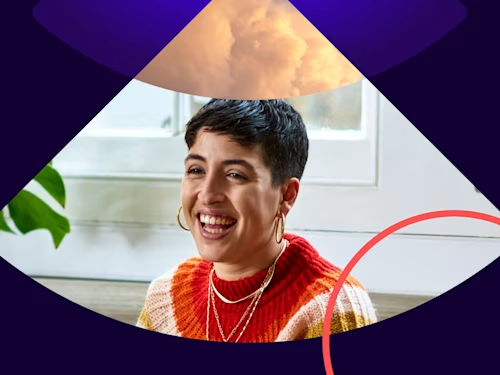
The Future of Healthcare is Digital: 5 Reasons to Get Your Operation Online
Healthcare providers created touchless, digitized processes. The result: a safer environment and five benefits of efficiencies and scalable growth.


As the world ground to a halt in an attempt to curb the spread of COVID-19, the healthcare industry was forced to do the opposite and confront its own set of unique challenges. Increased patient volumes, new public safety concerns, and a shifting regulatory landscape forced providers to quickly adopt more efficient (and safer) ways to conduct business.
Closing up shop to adjust strategy or train staff for remote work wasn’t an option for essential and front-line healthcare services. Life-saving solutions, like pop-up testing sites, virtual visits and online appointment scheduling were adopted with unprecedented speed.
Providers who have not yet built the infrastructure to support a digital system are still struggling to find ways to improve the patient experience and work more efficiently. Every day, time and money are lost due to manual and paper-based processes.
The new, digital future of healthcare promises providers and patients a safer, more productive practice. It’s time to join the digital-first revolution!
Why should you digitize?
One of the biggest lessons of the COVID economy is that consumers are now accustomed to the ease and speed at which the digital market moves. Healthcare practitioners that wish to stay competitive are faced with a choice: embrace these evolving patient’s expectations or risk being left behind.
Freeing staff from time-consuming manual processes prepares you for modern, digitized operations while providing patients with a safer, simpler and more personalized healthcare experience.
Here are five reasons you should bring your healthcare operations online.
1. Touchless is faster and safer
COVID-19 safety precautions have made touchless service a requirement for all healthcare organizations. Contactless scheduling, consent forms, prescriptions, virtual visits, and online sign-in to minimize office crowding and wait times, are just a few of the ways the industry is providing patients with a safer environment to get care – protocols that will continue to be relevant and valuable long after the pandemic is behind us.
By bringing administrative work online, a fully touchless healthcare system streamlines every step in the patient journey, from pre-appointment registration to payment. As a result, people get the critical care they require and healthcare professionals get the patient information they need from intake forms, post-visit surveys and more without getting bogged down in paperwork.
2. Customer service starts online
The patient-provider relationship is grounded in trust. Patients need to feel like they’re more than just another number through the door. New, digital healthcare solutions offer enhanced, around-the-clock communication and care. Digitizing manual processes enables patients, employees and clinicians to complete necessary forms and agreements from virtually anywhere, from the convenience of their phone, computer or tablet. It saves time, reduces errors and creates an easier, more-secure experience for all parties.
Introducing patient portals to your healthcare practice is another way that upgrading your digital infrastructure can enhance the patient experience. Whether submitting a quick question, requesting a prescription refill or inquiring about appointment availability, the ability to directly message providers makes patients feel more connected to and in control of their healthcare experience and leads to greater patient retention.
3. Going digital expands your operational capacity
Having the operational capacity to meet patient demand is crucial, whether during a healthcare crisis or a seasonal influx. Even post-pandemic, healthcare practices will confront wide fluctuations in patient volume, due to reasons as varied as the seasonal flu or annual summer camp physicals. Automating back-office workflows and streamlining patient intake gives your staff the room they need to deliver the best year-round care to more patients in a shorter period of time.
For healthcare organizations that have had to sacrifice service quality as they struggle to keep up with increasing customer expectations and industry regulations, solutions like remote ID verification and telehealth consultations make it easier to manage increasing patient volumes—with minimal investment.
Adopting a digital approach brings a 35% reduction in labour costs, 95% less time spent on patient intake forms and a 20% increase in revenue.
4. Operational efficiency delivers a better employee experience
Data and contracts are at the heart of every modern industry; none more so than healthcare. Confidential information plays a critical role in keeping hospital systems running—but outdated software can easily impede your practice’s ability to efficiently deliver quality healthcare.
Today, healthcare leaders are using advanced digital technology that integrates with existing systems, providing elegant solutions to the inefficiencies that arise from using disparate technological systems. Full integration between state-of-the-art contract lifecycle management (CLM) solutions and other cloud-based IT software streamlines the daily work of securely preparing, approving, and storing agreements.
As information moves securely through your organization, the right digital infrastructure can also help turn raw data into clear-cut, actionable insights. CLM software with data analytics and artificial intelligence (AI) features can help you plan for the future and identify risks in existing agreements.
5. Efficiency sets the stage for scalable growth
Automating back-office workflows, streamlining patient intake procedures, and offering telehealth visits decreases the cost of care, improves margins and boosts productivity. It also provides every organization with the room it needs to grow.
As technologies like electronic signatures and workflow intelligence take the place of inefficient manual contract management procedures, you can gain the freedom and resources you need to plan for the future, expand your operation to reach new patients, and focus on what matters most, providing excellent patient care.
Moving online is also easier than you think. Improving the patient experience and driving greater efficiency is as simple as streamlining the manual processes that affect your patients and employees.
Contribution by: Andrew Richmond, National Health Services Account Director, Docusign
Related posts
 Insights for LeadersUpdated Feb 11, 2025
Insights for LeadersUpdated Feb 11, 2025 Insights for LeadersUpdated Feb 11, 2025
Insights for LeadersUpdated Feb 11, 2025How to Electronically Sign and Send a PDF

Liveness Detection for ID Verification

How to Electronically Sign and Send a PDF
Discover what's new with Docusign IAM or start with eSignature for free


